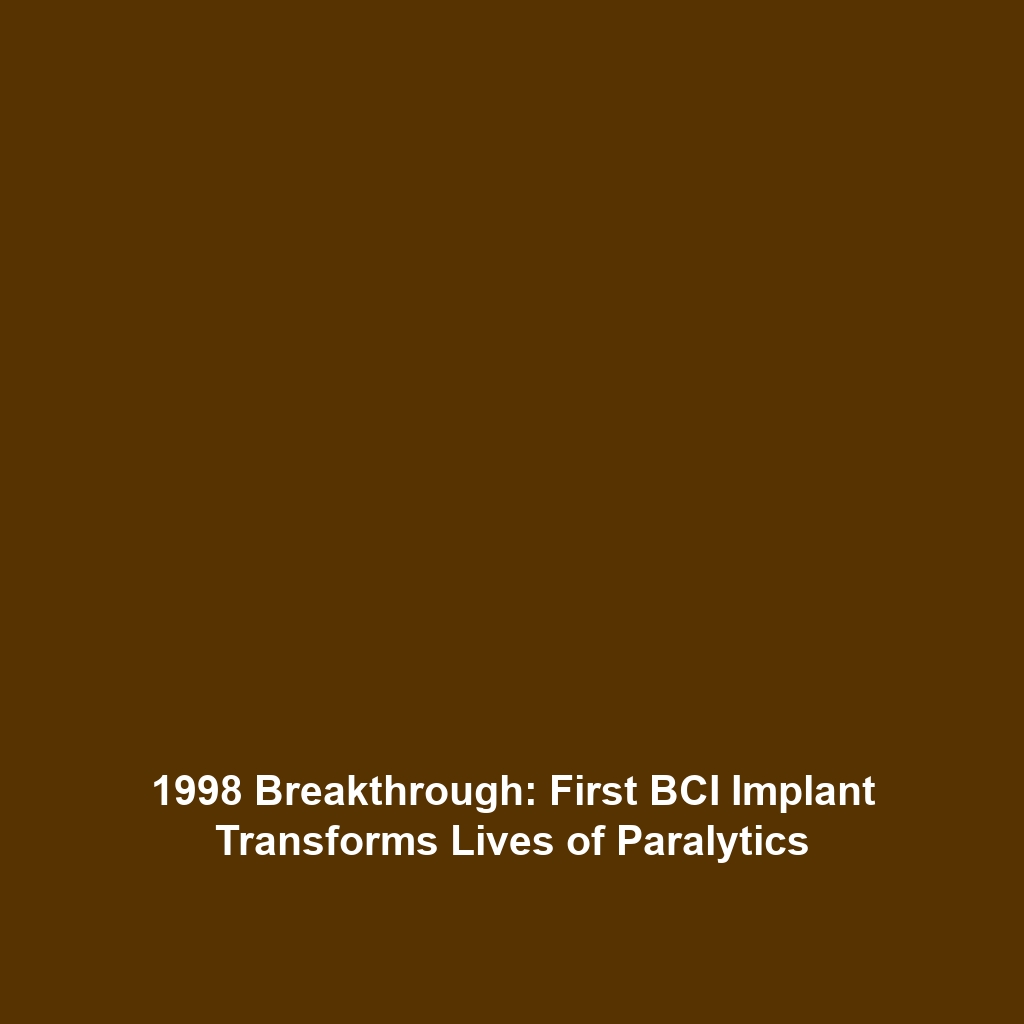The Pioneering Work of Philip Kennedy in Brain-Computer Interfaces
Introduction
In the realm of medical technology, brain-computer interfaces (BCIs) represent a revolutionary advancement that has the potential to transform the lives of individuals with severe disabilities. A significant milestone occurred in 1998 when Philip Kennedy developed the first human implant designed to facilitate communication for a paralyzed individual via a BCI. This groundbreaking innovation not only showcased the possibilities of direct brain signaling but also paved the way for future explorations into neuroprosthetics and enhanced communication methods for individuals with mobility impairments.
Key Concepts
Understanding the implications of Philip Kennedy’s work requires an exploration of several major concepts related to brain-computer interfaces:
The Mechanism of BCIs
BCIs operate by interpreting brain signals and translating them into commands for external devices, enabling users to communicate or control devices directly through neural patterns.
Types of BCIs
BCIs can be classified into two primary categories: invasive and non-invasive. Kennedy’s implant represents the invasive approach, which involves surgically embedding electrodes in the brain to capture electrical activity.
Significance of Communication
Communication is a critical element in the lives of paralyzed individuals. Kennedy’s implant exemplified how BCIs could facilitate meaningful interactions and improve quality of life by allowing users to express needs and thoughts independently.
Applications and Real-World Uses
The applications of Kennedy’s pioneering work extend far beyond initial experiments. Notably, his invention has influenced:
- Assistive Technologies: Devices that enable individuals with mobility impairments to operate computers and other machinery through thought.
- Neuroprosthetics: Technological advancements in prosthetic limbs that can be controlled with brain signals.
- Rehabilitation: Innovative therapies incorporating BCIs to help regain motor function and improve neuroplasticity.
Current Challenges
Despite the advancements brought by Kennedy’s human implant, several challenges persist in the field of BCIs:
- Technical Limitations: Current technology still faces issues regarding signal clarity and noise reduction.
- Long-term Viability: Questions remain about the long-term functionality and biocompatibility of implanted devices.
- Accessibility and Ethics: Ensuring equitable access to BCI technology and addressing ethical concerns related to privacy and autonomy are complex challenges.
Future Research and Innovations
The future of brain-computer interfaces is bright, with ongoing research aimed at overcoming existing challenges. Key areas of focus include:
- Enhanced Signal Processing: Developing advanced algorithms to improve the accuracy of brain signal interpretation.
- Wireless Technology: Innovations are leading towards wireless neuroelectrode systems, reducing the need for invasive procedures.
- Integration with AI: The incorporation of artificial intelligence to better predict user intentions and refine control systems.
Conclusion
Philip Kennedy’s remarkable milestone in 1998 has greatly impacted the field of brain-computer interfaces, enabling individuals with paralysis to communicate effectively. As research and technology continue to evolve, the potential for BCIs to enhance the quality of life for countless individuals remains expansive. For those interested in further exploring the implications of BCI technology, additional resources and articles are available on our website.
